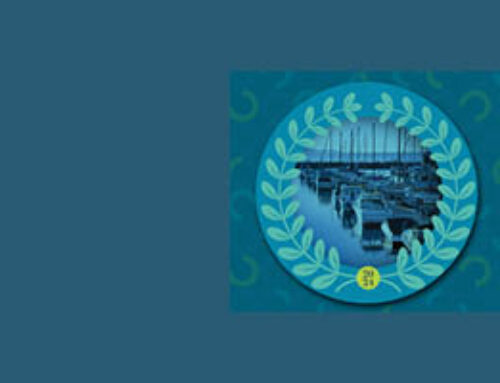Handling troubled customer credit
Stay profitable while dealing with troubled customers.
By Mark E. Battersby
Beware! Even a marine fabricator’s best customers can suddenly become deadbeats. The good news, according to recently-released figures, is that fewer of your marine canvas and upholstery operation’s customers and suppliers are filing for bankruptcy. The bad news is that many businesses are hoarding cash, slowing payments to creditors or finding themselves without money to pay their bills.
How those slow—or no—pay customers are dealt with can determine whether the marine fabrication business will have the cash flow needed to sustain its operations. Indeed, the fate of every business depends on how customer credit is handled.
Begin at the beginning
Before extending credit, consider the impact on the business if the customer doesn’t pay. It doesn’t take too many nonpaying customers to create trouble for any business. When the customer opens an account, get complete information about the customer. In fact, consider asking for a personal guarantee by the principals of small corporations. After all, do you want to put your business at risk for someone who won’t personally back his business’ commitment to pay?
When payments lag:
- Cash checks promptly. Keep records as to when checks are received.
- Condition future business on payment for the new goods—and some reduction in the past-due amounts.
- Sell COD—an excellent protection against deadbeats.
- Consider retaining a security interest in the goods sold until they are paid for.
Rights and options
When a customer fails to pay his or her debts, the marine fabrication business (the “creditor”) has several remedies available to help collect the money from the customer (the “debtor”). These strategies include methods that do not require court involvement (called “self-help” remedies), and remedies that do involve the courts.
Self-help remedies and collection agencies involve the first attempts at debt collection undertaken by many businesses. First, the creditor may simply contact the debtor directly and demand payment. If these attempts fail, the creditor may transfer the debtor’s account to another business—the debt collector.
The court remedy. Sometimes, it is necessary to initiate court proceedings in order to collect on a debt. In cases involving emergencies, the creditor may be able to seize the debtor’s property even before the court decides the matter. These are extraordinary measures, however, and should be employed only when other methods would be futile or useless, such as when perishable goods are involved, or when the collateral, if left in the debtor’s control, would rapidly decline in value.
Lawsuits and liens. If all of the remedies described above fail, the creditor can sue to collect the debt. The creditor will be entitled to an enforceable judgment if it proves its case or if the debtor fails to contest the claim. Once obtained, the creditor can enforce the judgment by claiming enough of the debtor’s property to cover the debt, usually with the assistance of the local sheriff.
The sheriff may actually take the property, or will record the creditor’s lien against the property, such as when real estate is involved. The sheriff can arrange for a sale of the property, the proceeds of which are used to satisfy the debt.
A lien is another type of legal claim to the debtor’s property that helps ensure debt repayment. A judgment lien arises when a creditor goes to court to collect on a debt and proves its case, or the debtor fails to contest the matter. The court will order a judgment in the creditor’s favor in the amount owed to it by the debtor, and the creditor then has a lien against the debtor’s property in the amount of the judgment.
Other types of liens can arise when, for instance, the creditor has done work on or supplied materials for the debtor’s property and the debtor fails to pay for the goods or services. A creditor with a lien on the debtor’s property may, in certain circumstances, foreclose on the lien and sell the property to satisfy the debt.
Involuntary bankruptcy. If none of these debt-collection tactics is successful and the debtor owes a substantial amount to several creditors, the creditors may be able to initiate an involuntary bankruptcy proceeding. If the court accepts the petition, the debtor may be forced to liquidate its assets to pay off its debts, or it may be able to file a reorganization plan that sets out how its debts will be paid. If the creditors initiate such a proceeding in bad faith, however, they may be subject to severe financial penalties, including punitive damages.
Bankruptcy. The federal bankruptcy laws have long provided a safe harbor for troubled marine fabricators to reorganize, refinance and begin the turnaround to profitability free from pressure by their creditors. Now, new bankruptcy laws severely reduce that safe harbor while, at the same time, making it more difficult for marine fabricators to deal with suppliers and customers that are in, or about to enter, bankruptcy.
If a marine canvas and upholstery business owner or manager is aware of a customer’s bankruptcy, even informally, it must act to preserve its rights. Most courts hold that a debtor with actual knowledge of the case, however obtained, will be bound by the deadlines for filing objections to debt discharges and for filing claims.
All too often, when a bankruptcy notice is received, the assumption is made that there are neither rights nor alternatives when it comes to the claim of the marine fabrication business. Creditors do have rights, fortunately.
For example, creditors in a bankruptcy are entitled to share in any distribution from the bankruptcy estate, usually depending on the priority of their claim. Under the reformed bankruptcy laws, creditors also have the right to be heard in court regarding the payment plan and the liquidation of the debtor’s non-exempt assets and payments from the assets of the bankrupt debtor.
Even more importantly, a creditor has the right to challenge a debtor’s right to a discharge of the debt owed the creditor. In other words, creditors can voice their opinions about debts that might or might not be forgiven. They can also argue about assets that, perhaps, should have been included in the bankruptcy estate.
When it comes to dealing with a customer or supplier after discovering they are bankrupt, the marine fabricator should immediately cease any collection action. This automatic stay is designed to protect the debtor and his property from all forms of collection during the bankruptcy. Naturally, when a notice of the bankruptcy is received, proof of a claim should be promptly filed with the court. And, keep in mind that deadlines are strictly enforced in bankruptcy cases.
So-called “secured creditors” are at the top of the payback list and have specific rights to the property, which is the collateral for their claim. Secured creditors also have the best chance of getting relief from the automatic stay or “adequate protection payments” to prevent a decline in the equity available to secure their claim.
Deadbeat refund troubles
Suppliers to bankrupt companies are facing big headaches as bankruptcy estates are now attempting to claw back monies paid to those suppliers during the 90-day run-up to the insolvent companies’ filings. Enabled by Section 547 of the U.S. Bankruptcy Code, so-called “preference claims” are intended to prevent non-solvent debtors/companies from favoring one creditor over others in the run-up to bankruptcy filing.
Preference claim lawsuits are brought to force vendors that were paid within the 90-day window to return the payments. Presumably, the funds go back into the estate, from which all unsecured creditors may get a settlement.
Obviously, not all bankrupt companies pursue preference claims, often for fear of damaging supplier relationships as the bankrupt entity continues as a going concern. The impact on smaller suppliers can be harsh. Larger companies, with armies of lawyers, can more easily intimidate bankruptcy trustees into taking pennies on the dollar.
The minimum claim allowed is $5,850, a figure set by the five-year-old Bankruptcy Reform law and tied to a cost-of-living index. But if a small supplier is hit with a $30,000 preference suit, it can spend nearly that much to hire an attorney and an expert witness and to unearth invoices and records.
Writing it off
Bad debts that arise from the operation or workings of a marine canvas and upholstery business differ from non-business bad debts. Debts from a trade or business can be deducted when and to the extent that they become partly or totally worthless and are generally deductible from gross income. Generally, bad debts are deductible in the year in which they become worthless.
Whether retailers offering store credit, dealers extending credit or manufacturers and distributors offering payment plans, every business faces the all-too-real risk created by troubled customers. While the obvious answer to avoiding no or slow-pay problems is to know your customers, few marine fabricators can be picky about whom they sell to. But a sound credit policy, a little knowledge about the rights of creditors and professional advice can keep the cash flowing even from troubled customers.
 TEXTILES.ORG
TEXTILES.ORG 






